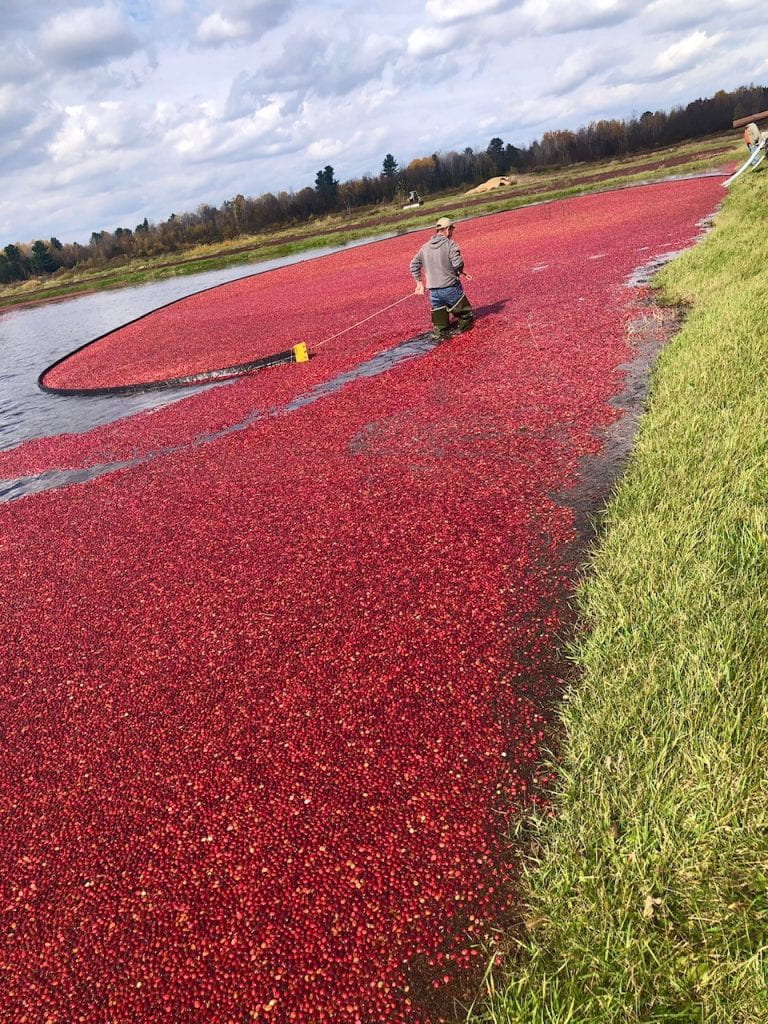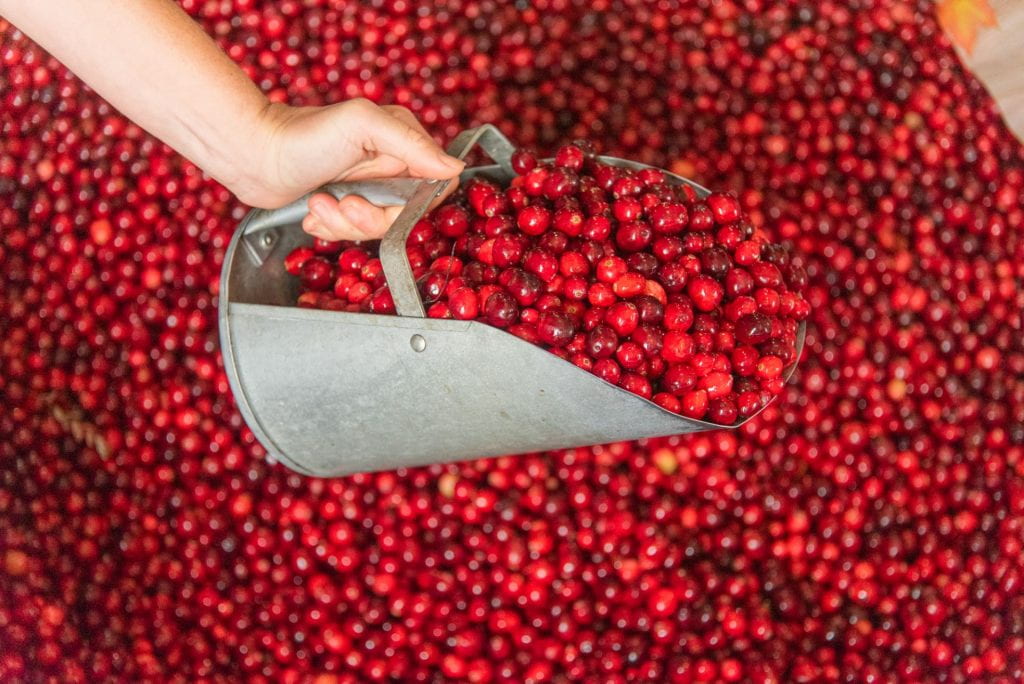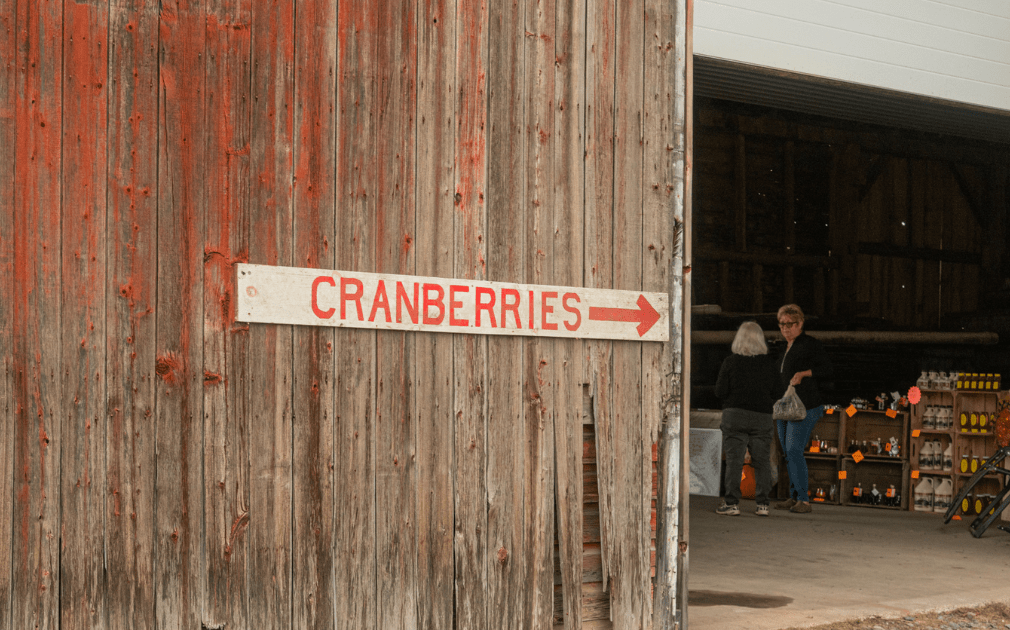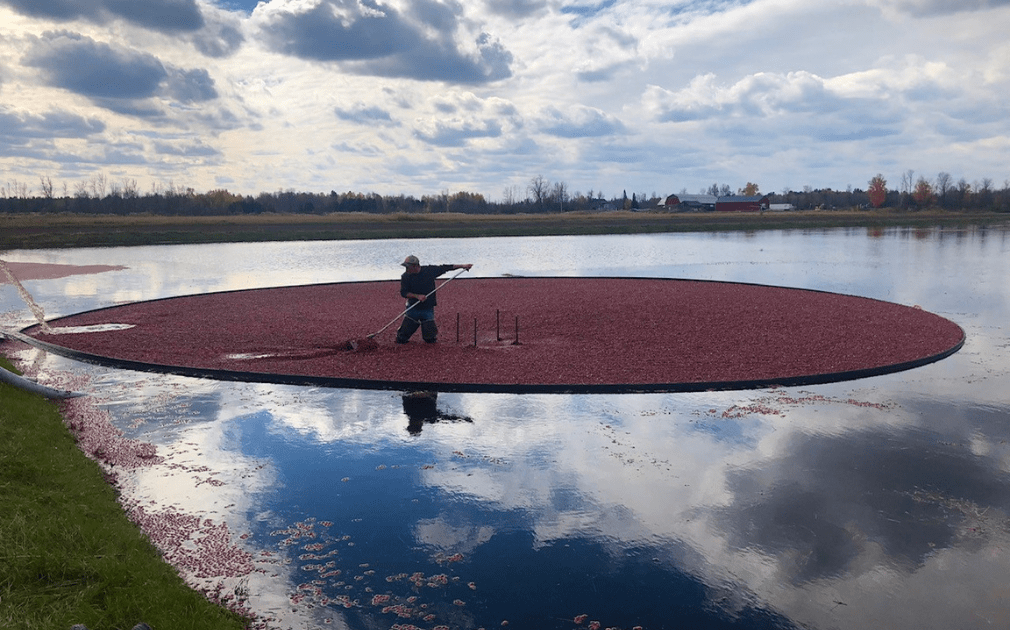One of my favorite things about fall is the beautiful seasonal color. Of course, I am talking about the glowing ruby reds of… cranberries! One of the last fruits of the year to ripen, these native, low-growing berries are a staple of holiday feasts, but they have application far beyond turkey condiments. Cranberries are high in fiber and vitamin C, as well as anthocyanin – that’s what gives them their vibrant color; it is also a powerful antioxidant. Naturally low in sugar, cranberries are often prepared with additional sweeteners – but they don’t have to be!
We are incredibly lucky to have one of just two cranberry farms in New York State right here in the North Country, at Deer River Cranberries of Brasher Falls. When I first tasted these berries – available fresh and frozen from many local retailers, as well as direct from the farm – I was amazed by how different the flavor was compared to supermarket ‘fresh’ berries. In fact, they are so tasty that my family and I like to snack on them raw, without any added sugar.

But, if you do want to prepare something with them, you will be spoiled for choice. From a simple cooked cranberry sauce (whole-berry, crushed, or strained style) that can be water-bath canned for long-term, shelf-stable storage, to fresh relishes, juicing, and baked goods, cranberries are as versatile as they are beautiful.

If you are looking for the quickest option to preserve these local berries for future projects, freezing is the easiest preservation method. Simply, sort the berries by discarding brown or squishy ones, place the rest into freezer bags, label, and drop in your freezer. One quart or one gallon freezer bags work well, a gallon bag holds approximately three pounds of berries. Fresh berries freeze wonderfully and can be defrosted and used for any recipe at a later date.
If you’d like to can for later, check out this basic recipe for traditional cranberry sauce, with instructions for water bath canning, from the National Center for Home Food Preservation.
Another option is to make cranberry fruit leather, by using the strained version in the recipe link above and spreading it to dry in a food dehydrator.
Make it fancy: When I’m making cranberry sauce to consume soon (not to can), I like to get creative. A recent favorite version included adding shredded red beets and red wine. For this, I started with the recipe above, reduced the sugar to ½ cup and eliminated the water. Then I added 2 cups of shredded beets and two cups of red wine. I simmered it on low, mashed it all to a thick sauce consistency, and then poured into clear jars. I stored it in the fridge where it will store for one week.
Cranberries also pair wonderfully with that other NoCo staple – maple syrup – and, of course, with honey. If you are using either, you will need to reduce or eliminate water in your recipe. Remember that sugar is a functional ingredient in canning recipes, so it isn’t recommended to replace it with alternatives in a recipe you are intending to make for long-term storage.
Tangy Cranberry Relish
This fresh relish adds texture and flavor
- 2 cups of raw whole cranberries
- 1-2 whole navel oranges (to taste)
- 1 cup of walnuts
- ½ cup sugar (optional)
Prepare at least a few hours before eating:
- Scrub the outside of the oranges with hot water and soap and rinse.
- Cut the oranges into rough pieces.
- Put all ingredients in a food processor and pulse until it’s a rough texture, but not fully pureed.
- Taste and adjust ratios as you like.
- Refrigerate and consume within 4 days.
Enjoy!
Sasha has been preserving food and teaching home food preservation for many years and now lives in Potsdam on a small family homestead. Summer 2022 she went through Extension’s Master Food Preserver Volunteer training and is excited to share her passion for local food with anyone who will listen. She’s very happy to have access to fresh cranberries again, after many years abroad in a cranberry-less boggy country.

